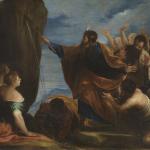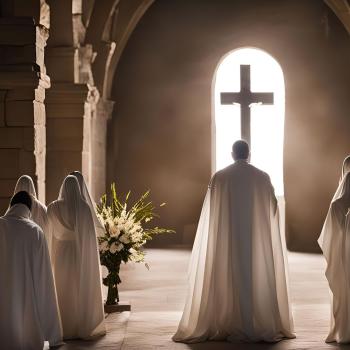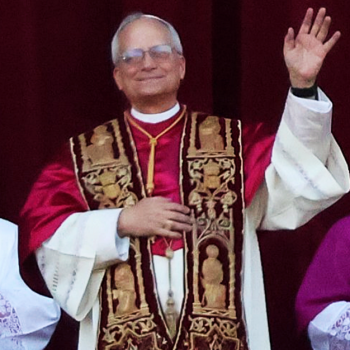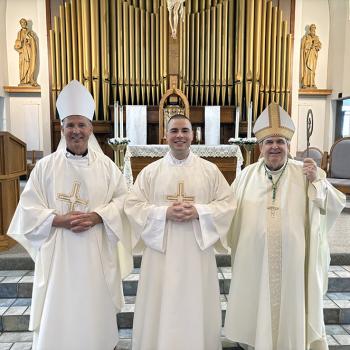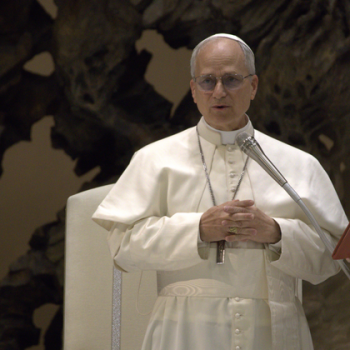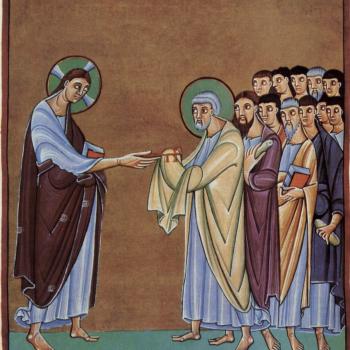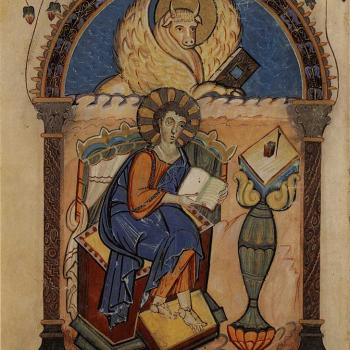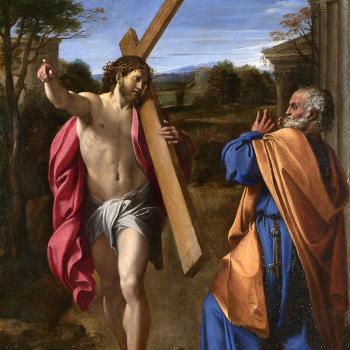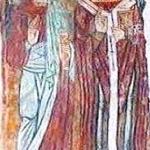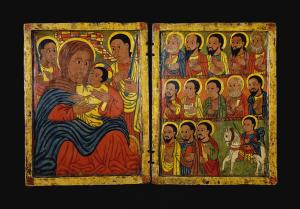
Background:
December 8 marks The Solemnity of the Immaculate Conception in the Latin Rite of the Catholic Church. Officially proclaimed in Pius IX’s Ineffabilis Deus in 1854, the dogma reads as follows:
“We declare, pronounce, and define that the doctrine which holds that the most Blessed Virgin Mary, in the first instance of her conception, by a singular grace and privilege granted by Almighty God, in view of the merits of Jesus Christ, the Savior of the human race, was preserved free from all stain of original sin, is a doctrine revealed by God and therefore to be believed firmly and constantly by all the faithful.”[1]
Generally speaking, the teaching seems to not find acceptance among Orthodox Christians, both Chalcedonian and non-Chalcedonian alike. For those unfamiliar with the terminology, the first appellation refers to the communion of sixteen autocephalous churches (Greece, Russia, etc.) commonly referred to as Eastern Orthodox. The schism between Eastern Orthodox and Catholic Christians has been commonly dated to A.D. 1054, though many scholars recognize that it solidified over the following centuries. A lesser known and much older schism – at least if the typical high school classroom in the U.S. is any barometer – began in the fifth century with the rejection of the Council of Chalcedon (A.D. 451) by a significant number of Copts, who sided with their deposed Patriarch, Dioscorus of Alexandria. These were followed by the Ethiopians, the Armenians, and many in Syria, and the schism persists until present. The Christians from these churches are typically referred to as “Oriental Orthodox”, perhaps to distinguish between the two groups of Orthodox Christians (i.e. Chalcedonian and non-Chalcedonian).
Ethiopian Orthodoxy and the Immaculate Conception
As mentioned above, the Catholic dogma of the Immaculate Conception is generally rejected by Eastern Orthodox Christians. The same can be said for Oriental Orthodoxy, but there seems to be two notable exceptions; the Ethiopian Orthodox Tewahedo Church and the Eritrean Orthodox Tewahedo Church. Both seem to teach something similar to the Catholic doctrine, if not identical. The reason why I feel the need to add the qualifier seem is because, as of present, my sources overwhelmingly consist of what might be classified as both unofficial and semi-official sources. Allow me to present them by beginning with the Ethiopian ones.[2]
On the website of an association named Mahibere Kidusan, which operates under the banner of the Sunday School Department of the Ethiopian Orthodox Tewahedo Church,[3] the following is posted on the entry for their Feast of the Birth of the Blessed Virgin Mary: “The Ethiopian Orthodox Tewahido Church celebrates the birth of the Blessed Virgin Mary on Ginbot 1 (May 9), nine months after Nehasie 7 (August 13) celebration of her Immaculate Conception.”[4] However, turning to the Ethiopian Synaxarium for the date of Nehasie 7 (August 13) , we do not find much solid evidence for anything resembling the Immaculate Conception. The only reference of note is the following:
“And when he [i.e. St. Joachim] woke from his dream he came to his house, and told his wife [i.e. St. Hannah] the vision which he had seen during sleep; and she conceived forthwith, and brought forth our holy Lady, the Virgin Mary, the God-bearer, the object of boasting of all the world. Salutation to thy spiritual conception, O Mary.”[5]
A 2009 comment of a user named Hiywot on OrthodoxChristianity.net may shed light on why the term “Immaculate Conception” in conjunction with “Ethiopian Orthodox” does not yield very much by way of a Google search in terms of official sources (at least in English). On October 7 of that year, they posted the following (in part): “We the Tewahidos do not use the term ‘immaculate conception’. We simply say that the Blessed Virgin Mary is free from original sin. We call original sin in ge’ez as ‘tinte te’abiso’ and we say that Mariam is free from ‘tinte te’abiso’.” The user goes on to cite the ninety-sixth chapter of a fourteenth-century Ethiopian work known as the Kebra Negast, which reads:
“And in His mercy God the Father created the Pearl in the body of ADAM. He cleansed EVE’S body and sanctified it and made for it a dwelling in her for ADAM’S salvation. She [i.e., MARY] was born without blemish, for He made her pure, without pollution, and she redeemed his debt without carnal union and embrace. She brought forth in heavenly flesh a King, and He was born of her, and He renewed his life in the purity of His body.”[6]
This seems like something more akin to the dogma of the Immaculate Conception, as cited above. When we turn to a couple of semi-official sources from the Eritrean Tewahado Orthodox Church, this appears to be confirmed. For example, on the website of the St. Mary Youth Ministry (affiliated with that church), the following concise explanation of the teachings of Eritrean and Ethiopian Orthodoxy regarding St. Mary’s conception is offered:
“’Our Lady, Virgin Mary, who conceived and begot Christ in virginity is free from the original sin derived from the descendants of Adam, clean from any sins of the flesh or soul; embedded in the conscience of God before the time of her birth, free and protected from human desire and [frailty]; and the choicest from among the chosen. Such is the virgin Mary – pure and holy of the holiest.’ [Song of Songs 4:7]”.
The article goes on to explain that “the core idea is that St Mary is preserved [free] from ‘original’ sin since conception and has never been touched by personal sin”.[7] Finally, on the website of the Eritrean Tewahado Orthodox Church’s Diocese of U.S.A. and Canada, there is a direct response to the query, “What is our position on St. Mary and Immaculate Conception and what is it?” There we read in part: “We believe the Virgin Mary is sinless (Free from the sin of Adam) [….] God by his grace and wisdom preserved her [i.e. St. Mary] from the sin of Adam.”[8] Thus, all of the above leads me to believe that both Ethiopian and Eritrean Orthodoxy affirms the Immaculate Conception, or at least something similar.
What do you think?
[1] https://www.papalencyclicals.net/pius09/p9ineff.htm (accessed 12/7/2022).
[2] I was first made aware of the fact that the Ethiopian Orthodox accept the Immaculate Conception by a fellow Catholic poster in a Facebook group. Most (with the possible exceptions of the Kebra Negast and the Orthodox forum below) are the product of my own investigations.
[3] https://eotcmk.org/e/ (accessed 12/7/2022).
[4] https://eotcmk.org/e/the-birth-of-the-blessed-virgin-mary-2/ (my emphasis, accessed 12/7/2022).
[5] The Synaxarium of The Ethiopian Orthodox Tewahedo Church, trans. Sir E.A. Wallis Budge. Printed by the Ethiopian Orthodox Tewahedo Debre Meheret St. Michael Church Garland, TX USA. PDF retrieved at https://www.tewahedo.dk/litt/cached/The_Ethiopian_Synaxarium.pdf , p. 688. My emphasis, accessed 12/7/2022.
[6] https://www.sacred-texts.com/chr/kn/kn096.htm (my emphasis, accessed 12/7/2022).
[7] https://www.stmym.org/copy-of-4landmarksteachingofstmary (accessed 12/7/2022).
[8] https://english.eritreantewahdo.org/bwl-advanced-faq/what-is-our-position-on-st-mary-and-immaculate-conception-and-what-is-it/ (accessed 12/7/2022).



